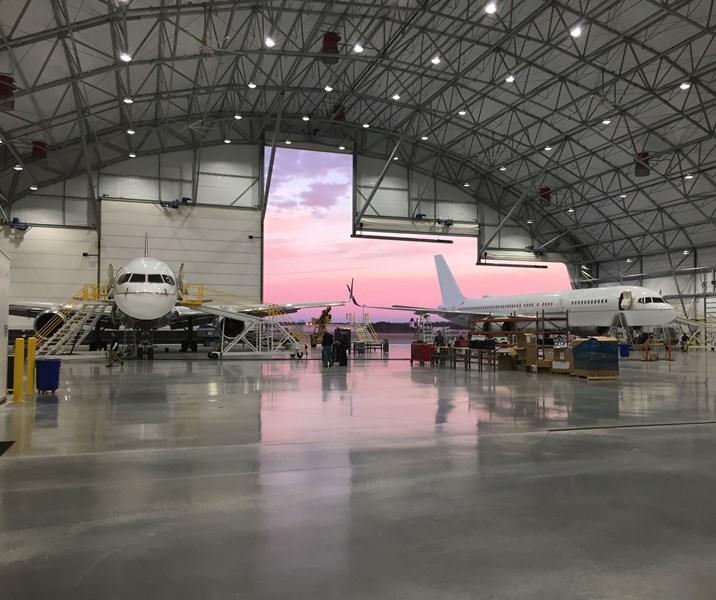
Upticks in sequential demand for both new and used parts has AAR Corp. executives confident that commercial aftermarket demand trends are steadily returning to pre-pandemic patterns in terms of both volume and material sourcing.
The airframe and component support specialist has been steadily growing its parts distribution business, including both new parts via deals with manufacturers and used serviceable material (USM) it acquires and re-sells. Demand for both, and USM in particular, has been slow to return as airlines shuffle under-used or surplus assets to avoid costly overhauls. Recent signs suggest this is changing, AAR President and CEO John Holmes said.
“We are beginning to see signs that engine green time availability for certain carriers may be dwindling, which will lead to increased engine shop visits, which are an important source of demand for our USM parts,” he told analysts on a Dec. 20 earnings call. “We’ve been anticipating this inflection point for some time, and we are now seeing early signs that it is occurring.”
Holmes in October called out flight crew staffing issues at some airlines as an unexpected contributor to green-time usage. Carriers have been working to fill needed captain and first-officer slots while using up available hours and cycles on idled engines. As they plan maintenance schedules, typically 6-12 months in advance, more engine inductions are being scheduled.
“For key customers that we support, that green time is dwindling and those engines and that deferred maintenance is now coming due,” Holmes said. “And so for the engine shops, for example, that we support, we are seeing signs of increased demand as they look at their input schedule for 2023.”
For AAR, which generates a majority of its commercial business from North American customers, demand for USM solves only part of the surplus-parts challenge. Getting material has been difficult as well as asset owners opt to hang on to engines and airframes until the global traffic demand picture becomes clearer. In some cases, those looking to sell engines with quality USM attached are waiting for prices to come up, while buyers are holding firm. In others, macro issues, such as strong traffic demand coupled with new-aircraft delivery delays could mean some older aircraft are more valuable flying the line than being sold for part-out.
“It has been a very tight market,” Holmes said. “We have just recently started to see things come available for certain asset types that we support, and that was one of the reasons we put out the capital this quarter to move quickly to acquire that material. We are seeing, even as we look into early next year, more opportunities to put capital to work to acquire materials to support that anticipated increased demand for USM.”
AAR said it spent about $60 million in parts acquisitions during the three months ended Nov. 30—the company’s fiscal 2023 second quarter (Q2). The expenses were roughly split between USM and new-parts provisioning purchases to support distribution deals, such as an agreement with Unison that expands AAR’s distribution of ignitor plugs, ignition leads, harnesses, and related spares.
AAR saw Q2 sales rise 8% to $470 million year-over-year, while sales to commercial customers jumped 21%. While Holmes called the specific parts-business increases and overall results “encouraging,” he added that parts sales volume remains more than 20% below pre-downturn levels. “On top of this, we expect the full ramp-up of our new distribution agreements and the increased adoption of USM to provide growth opportunities beyond the market recovery,” he added.
Recent results and commentary from parts manufacturing authority specialist Heico suggest that the commercial aftermarket’s recovery is showing no signs of stalling, even amid mounting economic pressure in some regions.
“We’ve not seen any change in order patterns from our customers as a result of the most recent economic data,” Heico Flight Support Group (FSG) President Eric Mendelson said on a Dec. 20 earnings call. “Things are continuing to be extremely strong.”
FSG saw net sales grow 33% in its fiscal 2022 fourth quarter, which ended Oct. 31, to $346 million, including a 25% jump in organic parts sales and services.



